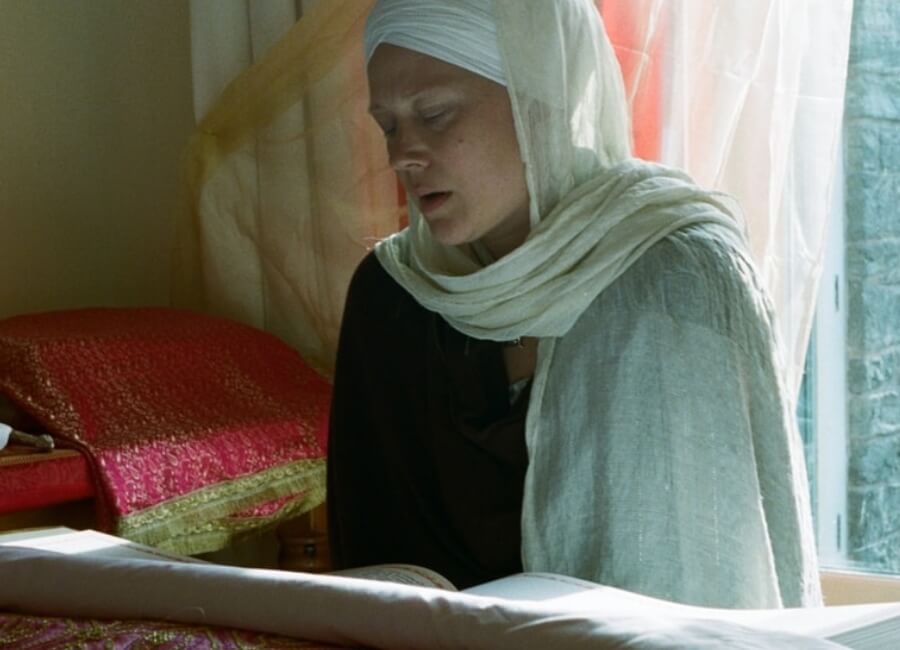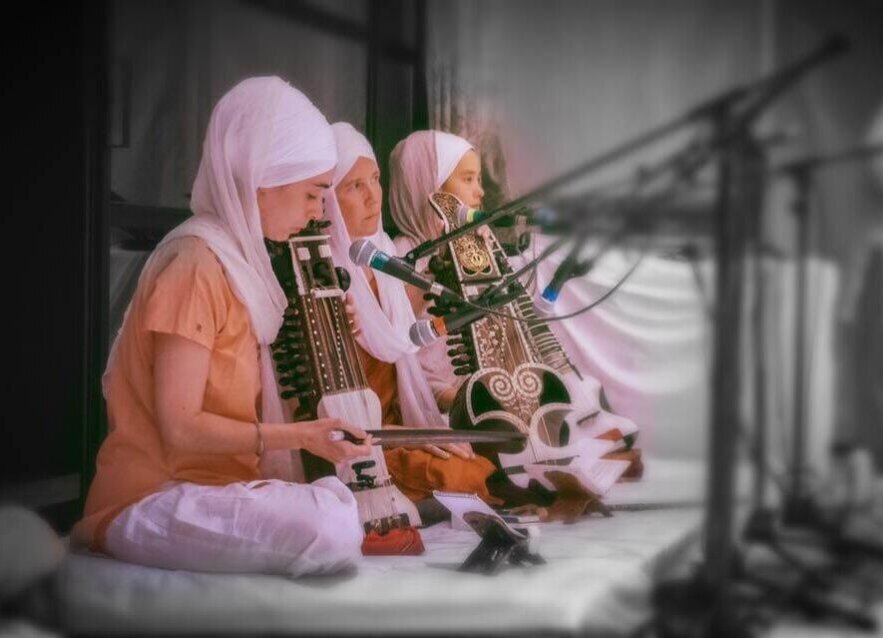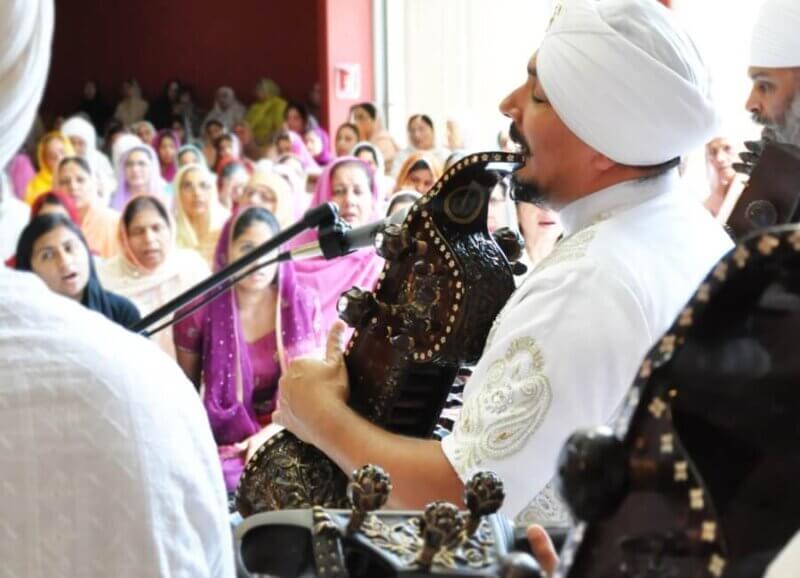The Source
Sri Guru Granth Sahib has the unique distinction of having been compiled by the Sikh Gurus themselves. As such it is a flawless representation of the Gurus’ thought, offering wisdom for the betterment of humankind. Sri Guru Granth Sahib is also known as Shabad Guru or the Living Guru (or Master).
The teachings deliver a universal, indiscriminate message. Musical moods (raags/ragas) are prescribed within the text to carry the diverse communications of love, faith, truth and justice.
At Raj Academy, our trainings follow the prescribed wisdom and framework from Sri Guru Granth Sahib and allow our learners to build their own spiritual connection to this universal wisdom as they desire.
Insights
Some insights on the spiritual wisdom that our trainings and framework is based on:
The Sri Guru Granth Sahib is a collection of 1,430 ang (a respectful term for pages), containing 3,384 poetic compositions (shabads/sabds). Its verse forms include swayas, saloks and vaars (ballads).
The shabads are composed in 60 raags (moods) by 43 authors. Sikh Gurus created 32 of the 60 raags: 31 raags were created by Guru Arjan (the fifth Sikh Master) and the 32nd, Raag Jaijavantee, was created by Guru Tegh Bahadur (the ninth Sikh Master). The remaining 28 raags already existed in Indian classical music and were carefully selected and allocated by the Gurus.
In 1604 Guru Arjan compiled the first draft of the scripture, known as Adi Granth (literally, “first book”). He installed it in Harmandir Sahib, today’s Golden Temple in Amritsar, Punjab. Adi Granth remained with the Gurus until the imposter Dhir Mal took it, hoping that by possessing the Granth he could succeed as Guru.
The tenth Guru, Guru Gobind Singh, dictated the entire scripture of Adi Granth to his scribes from memory, adding his father's hymns and one of his own compositions. Upon his death, he appointed the sacred scripture Sri Guru Granth Sahib as the eternal Living Guru of the Sikhs.

Authors
Sri Guru Granth Sahib is an anthology not only of the sacred compositions of the Sikh Gurus, but also of some medieval Indian Bhagats (saints) and Bhatts (bards).
The inclusion of compositions by poets of different faiths, without distinguishing between them by label, adds to the uniqueness of the scripture. The authors come from a variety of class and creedal backgrounds, from Muslim to Hindu and from upper caste to low caste. The lack of discrimination is born of the progressive thought of the Sikh Masters.
The vocabulary of Guru Granth Sahib draws considerably from religion, philosophy, mysticism, mythology and law, as well as more common concerns of life. It includes the Persian, Arabic, Sanskrit, Punjabi and Braj languages.
The authors of Guru Granth Sahib include:
- Four Sikhs
- Seven Sikh Gurus
- Fifteen Bhagats
- Seventeen Bhatts
Sikh Bard Authors
Descended from minstrel families, Sikh bards associated closely with the Gurus.
- Mardana - 3 saloks: Mardana, a minstrel from a Muslim family, played the Rabab and accompanied Guru Nanak on his travels.
- Satai - 1 vaar (ballad): Satai played the rebeck in the court of Guru Angad, Guru Amar Das, Guru Ram Das, and Guru Arjan.
- Balwand - 1 vaar (ballad): Balwand played drums in the court of Guru Angad, Guru Amar Das, Guru Ram Das, and Guru Arjan.
- Baba Sunder - 1 shabad: Baba Sunder, the great grandson of Guru Amar Das, composed a hymn titled ‘Sadd’ at the request of Guru Arjan following the death of his father, Guru Ram Das.
Sikh Guru Authors
- First Guru Nanak - 974 shabads and saloks
- Second Guru Angad - 62 saloks
- Third Guru Amar Das - 907 shabads and saloks
- Fourth Guru Ram Das - 679 shabads and saloks
- Fifth Guru Arjan - 2,218 shabads and saloks
- Ninth Guru Tegh Bahadur - 59 shabads and 56 saloks
- Tenth Guru Gobind Singh - 1 salok
Bhagat Authors
- Bhagat Beni - 3 shabads
- Bhagat Bhikan - 2 shabads
- Bhagat Dhanna - 4 shabads
- Bhagat Farid - 4 shabads and 130 saloks
- Bhagat Jaidev - 2 shabads
- Bhagat Kabir - 292 shabads
- Bhagat Namdev - 60 shabads
- Bhagat Parmanand - 1 shabad
- Bhagat Pipa - 1 shabad
- Bhagat Ramanand - 1 shabad
- Bhagat Ravi Das - 41 shabads
- Bhagat Sadhna - 1 shabad
- Bhagat Sain - 1 shabad
- Bhagat Surdas - 1 shabad
- Bhagat Trilochan - 4 shabads
Bhatt Authors
- Bal - 5 swayas
- Bhal - 1 swaya
- Bhikha - 2 swayas
- Das - 1 swaya
- Gyand - 5 swayas
- Harbans - 2 swayas
- Jal* - 1 swaya
- Jalan - 2 swayas
- Jalap* - 4 swayas
- Kal* - 49 swayas
- Kalshar* - 4 swayas
- Kirat - 8 swayas
- Mathura - 10 swayas
- Nal - 6 swayas
- Sal - 3 swayas
- Sewak - 7 swayas
- Tal - 1 swaya
*Because of similar names and obscure records, various historians believe there were as few as 11 or as many as 19 Bhatts who contributed to compositions included in Guru Granth Sahib.
The Sections
The structure of the Sri Guru Granth Sahib can be divided into three sections: pre-raag section, raag section, and post-raag section.
The Pre-Raag (RAGA) Section (ang 1-13)
Pride of place is given to the sacred poetry of ‘Jap’ (ang 1-8), commonly known as ‘Japji’, a composition by Guru Nanak. It commences with philosophically dense ideas in Mool Mantra (ang 1), considered the basis of Sikh theology. ‘Jap’ comprises 38 pauris (stanzas), and the salok as the final verse.
After the ‘Jap’, the hymn of the evening prayer now referred to as ‘Rahiras’ (ang 8-12) is scripted in two parts: ‘So Dar’, comprising 5 shabads, followed by ‘So Purakh’, comprising 4 shabads. After this we come to the bedtime lullaby of ‘Kirtan Sohila’ (ang 12-13), which consists of 5 shabads.
The Pre-Raag (RAGA) Section (ang 14-1353)
The raag section is ordered principally according to raag: grouping together all the compositions in a particular raag and progressing through the 60. This gives the structural formation of Guru Granth Sahib a strong aesthetic value.
A raag creates a distinct mood in music by invoking specific feelings with its patterns of notes and tones of expression. Engaging the listener emotionally in this way increases the delivery power of a shabad. The raag not only complements but also elevates the overall message.
To understand the context and true meaning of each shabad, it is of supreme importance to acknowledge and apply the emotions of the specified raag. The raag enables us to capture the mood in which we are to receive the words. Without applying the raag, the shabad could be manipulated to produce various meanings, which would be unjust to its original purpose.
Among all ragas, that one is sublime, O Siblings of Destiny, by which God comes to abide in the mind.
Guru Ram Das on page 1423 of Guru Granth Sahib
Only a shabad’s prescribed raag creates the correct atmosphere for its content.
Within each raag segment the poetic material is organised first by meter: shabads, such as chaupadas (quatrains) and astpadis (octets), followed by chhants (six-line lyrics), then vaars (long narrative ballads consisting of pauris (stanzas) and saloks (a freer verse form)) and finally poems by Bhagats.
Within each meter, the compositions are further ordered by author. First the Gurus’ compositions are arranged in order of their succession of Guruship and with the term Mahalla/Mhala. Then the works of the Bhagats are set out, with Kabir given the principal place. The names of the Bhagats and saints are given with their compositions.
Within each author’s content, the final ordering is based on any 'ghar' that may be allocated to a shabad. Where the title of a shabad includes a numbered ‘ghar’, it is an instruction that a specific emotional tone (shruti) should be applied over the whole composition like a colour-filter. There are 17 ghars; they appear in numerical order from Ghar 1 to Ghar 17.
The Pre-Raag (RAGA) Section (ang 1353-1430)
The post-raag section contains saloks, swayas and other compositions. At the close (ang 1429) is ‘Mundavani’ (seal) to mark the end of the poetry of Siri Guru Granth Sahib so that no spurious compositions can be added thereafter. It is followed by a salok of Guru Arjan to give thanks for the successful completion of the great task by divine grace. At the end of the post-raag section is the ‘Raagmala’ (Ragamala) (ang 1429-1430).




